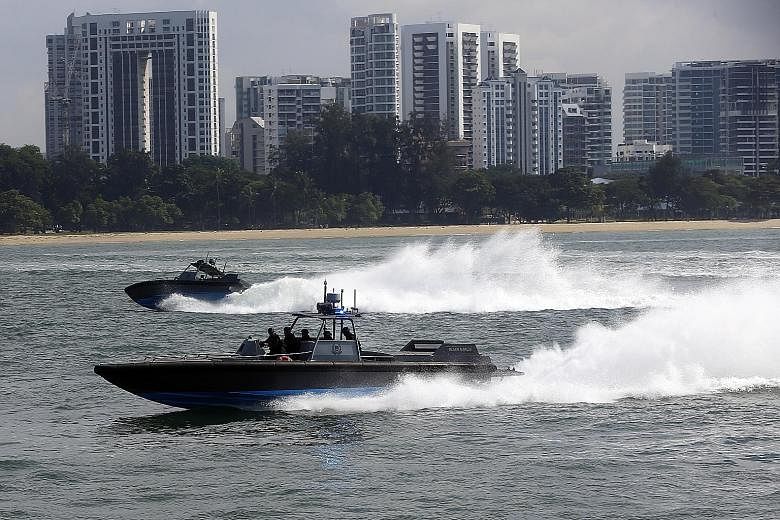Every day in the last year, the Police Coast Guard stopped an average of 20 suspicious vessels, amounting to more than 7,000 in 2014.
They also nabbed 46 illegal immigrants trying to enter Singapore by sea last year, a slight drop from the 49 illegals in 2013.
Giving the update at the launch of two police boat types yesterday, Deputy Prime Minister Teo Chee Hean said illegal immigrants and smugglers have become increasingly sophisticated and well organised.
"They now employ decoys and camouflage, conduct reconnaissance, and use faster boats that attempt to breach our maritime defence or make dangerous manoeuvres to evade arrest," said Mr Teo, who is also Home Affairs Minister.
Policing Singapore's coastline is also challenging, considering that the Republic is one of the world's busiest seaports.
Also, Singapore's shoreline is less than 500m from the international boundary at some places.
"This gives us little reaction time and space to respond to any sea-borne threats before it reaches our shoreline - which could be less than a minute for a boat travelling at high speed," said Mr Teo.
To strengthen the country's defence against such threats, Mr Teo launched two new faster police boat types yesterday.
They are the new patrol interdiction boats (PIBs) and second generation PK-class high-speed interceptors, which will significantly improve the coastal police's interception capabilities, said Mr Teo.
The PIB can go faster than 45 knots - an increase of at least 10 knots. The new interceptor, propelled by twin high-powered engines, goes as fast as 55 knots - 5 knots more than before.
They are also sturdier, with shock-mitigating seats.
The interceptors, in particular, will have improved ability to withstand hard impact during operations. Its reduced engine noise emissions and lowered profile will also help the boat in stealth missions.
Meanwhile, the PIB will have beaching capabilities that allow "officers to dismount on land quickly to continue pursuit if their target gets to shore", said Mr Teo.
They are also equipped with a Stabilised Naval Gun System, which can track targets automatically and is more accurate, he added.
By February next year, 11 PIBs and six interceptors will be added to the sea police's current fleet.
Last month, the Home Affairs Ministry put up a Request for Information for a simulator which will allow its specialist maritime officers to practise "high-speed tactical manoeuvring and interception" at up to 60 knots.
Mr Teo said: "Our officers need to continually hone their skills in order to fully utilise the capabilities of these new boats to intercept intruders effectively and swiftly, with due regard to their own safety."
The launch of the new boats follows a high-profile border breach in August last year, when a 30-year-old Mongolian woman and two men, a Briton and an Australian, sneaked into Singapore on a catamaran via Raffles Marina.
The woman, who was based in London, was here to snatch her two-year-old son away from the parents of her former Singaporean husband.
The intruders were arrested and jailed for 10 to 16 weeks.


